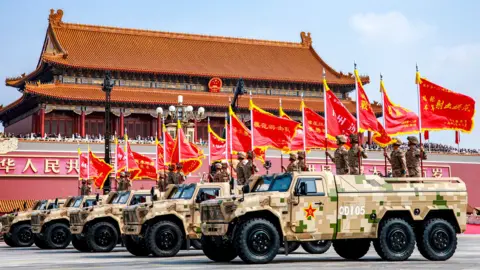The military might of the People's Republic of China was on full display in a parade marking the 80th anniversary of the end of World War Two on Wednesday.
Thousands of miles away, at the White House in Washington DC, Donald Trump was paying attention.
They were hoping I was watching, and I was watching, he said, acknowledging the impressive display in Tiananmen Square.
The message from China – to Trump and to the world - is clear: there is a new and growing center of power emerging that offers an alternative to the American-backed order of the past century.
Trump's lack of detailed commentary on the massive celebration underscored a sense of ambivalence about these developments. His remarks, coupled with his dissatisfaction regarding China's historical narrative relating to World War Two, reveal a complex mix of grievances and concerns.
Amidst these international tensions, Trump's trade policies are reshaping global alliances. As he focuses on an 'America first' approach, the rapprochement between China, Russia, and India may present new challenges for U.S. interests.
Trump’s tariffs are designed to protect American industries, but they risk alienating key partners while potentially losing judicial support for the newly established trade policies.
In conclusion, Trump's ambitious economic strategy aims for a resurgence of American influence. However, the rising military might of China, as displayed this week, may complicate these goals significantly, highlighting the high stakes of his approach.


















